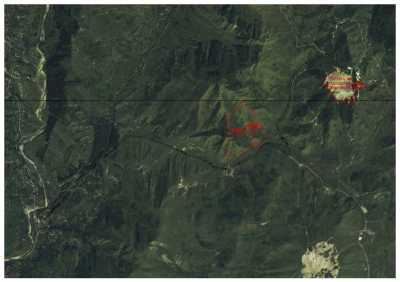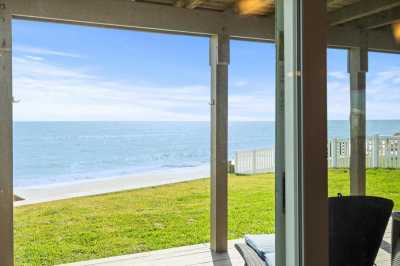The WPJ
THE WORLD PROPERTY JOURNALReal Estate Facts Not Fiction
Commercial Real Estate News

Several East Coast Industrial Markets Like Miami Expecting Growth From Coming Panama Canal Expansion
Commercial News » North America Commercial News Edition | By Hortense Leon | September 13, 2012 9:30 AM ET
The U.S. industrial real estate market has been recovering, although not at a rapid pace. Still, there are definite signs of life in the coastal markets, such as Los Angeles, San Francisco, Seattle, Miami and markets in Virginia and Georgia, according to Reis, Inc.
The reason, a number of the East Coast industrial markets are preparing to accommodate Post-Panamax ships (which are larger than the ones coming through the canal today) in 2015, the year that the expansion of the Panama Canal is scheduled for completion.
Some of these ports, which are anticipating more demand for industrial warehouse space when the Panama Canal expansion is finished, have been dredging to handle the bigger ships. But the task is neither easy nor inexpensive. "The Port Authority of New York and New Jersey will be forced to spend roughly $1 billion to raise the Bayonne Bridge if the port is to be accessible to larger container ships," says Brad Doremus, senior analyst at Reis.
Other East Coast markets like the Port of Miami are also involved with significant infrastructure improvements and deep dredging costs running into the billions of dollars in order to prepare to receive these post-Panamax container ships.
Although there was improvement in the industrial real estate market in the second quarter, the second half of 2012 does not show as much as promise, says Doremus. Vacancies in the second quarter decreased by 30 basis points, but vacancy levels will be flat in the third quarter, he says.
"We are now starting to see the trickle-down from a slowdown in manufacturing, which is having an adverse affect," says Doremus. A manufacturing index put out by the ISM (Institute for Supply Management), has showed signs of contraction in the last few months, he says.
Also dampening future prospects for the industrial real estate market are global concerns, such as the financial situation in Europe and slowdowns in emerging economies, such as China and Brazil, which are not growing as fast as they had been, says Doremus. Plus U.S. consumer spending is down from early in the year, he says.
"The distribution warehouse portion of the industrial real estate sector is dependent largely on consumer spending," so if U.S. consumers don't buy as much on Amazon, for example, the need for this kind of space is diminished, says Doremus.
In spite of the luke warm expectations for the economy and the industrial real estate market in the second half of 2012, the amount of new industrial space completed by the end of 2012 is expected to be higher than last year, when there were roughly 15.3 million square feet completed, says Doremus. In contrast, in 2012, 26 million square feet are scheduled for completion, he says. "While the supply of industrial space has been constrained in the last few years," because of a lack of demand, "there is a shortage of high-quality space. As developers see room for some new supply, there may be good demand for this kind of space," says Doremus.
As of the second quarter of 2012, the average asking rent in the US industrial market was $5.35 per square foot, and taking into account concessions, the affective rent was $4.81 per square foot.
Of course in certain primary markets, average rents are higher, says Doremus. In Los Angeles, the average asking rent for industrial space in the second quarter was $6.41 per square foot and $9.66 per square foot in San Francisco.
See related news story on WORLD PROPERTY CHANNEL:
Sign Up Free | The WPJ Weekly Newsletter
Relevant real estate news.
Actionable market intelligence.
Right to your inbox every week.
Real Estate Listings Showcase

$2,500,000
Mixed-Use Land For Sale
Von Ormy, Texas

49,000,000 THB
Villa For Sale
Hua Hin, Thailand

$2,620,000
Home For Sale
Tarzana, California

$8,195,000
Home For Sale
Isle of Palms, South Carolina

$750,000
Mixed Use For Sale
Corozal, Belize

€1,600,000
Residential Land For Sale
Scortoasa, Romania

$1,375,000
Home For Sale
Flagler Beach, Florida

$1,350,000
Vacation Villas For Sale
Isla Mujeres, Mexico

$2,495,000
Condo For Sale
Boca Raton, Florida

$2,800,000
Commercial New Construction For Sale
General Luna, Philippines

$1,400,000
Vacation Villas For Sale
Lowlands, Trinidad and Tobago

€450,000
Home For Sale
Central Istria, Croatia
Related News Stories
Commercial Real Estate Headlines
- 2025 Prediction: U.S. Commercial Investment Recovery Expected to Gain Traction
- Holiday Retail Sales for 2024 to Hit Record $1 Trillion
- Tech, AI Industries Drive Largest Share of Office Leasing Activity in U.S.
- Commercial Real Estate Lending in U.S. Enjoys Strong Growth in Q3
- U.S. Multifamily Market Begins Recovery in Q3
- Commercial Investment in Japan Spikes 24 Percent Annually in Q3
- Despite Return-to-Office Mandates, U.S. Office Vacancies Continue to Rise
- PROPSIG Tech Startup Acquired by World Property Data
- U.S. Commercial Mortgage Debt Hits $4.7 Trillion in Q2 as Delinquencies Increase
- Hong Kong Class A Office Rents Continue to Downtick in Mid-Summer
- U.S. Office Landlords Tenant Concessions Decline for First Time in 4 Years
- U.S. Commercial Mortgage Originations Spike 27 Percent in Q2 Over Q1
- Phnom Penh's Commercial Office, Retail Markets Face Slowdowns in 2024
- Global Edge Data Center Market to Hit $300 Billion by 2026
- Commercial Property Transactions in Japan Dive 25 Percent Annually in Q2
- Delinquency Rates for U.S. Commercial Property Loans Downticks in Q2
- Megawarehouse Lease Deals in U.S. Increase in 2024
- Office Tenants' Flight to Quality Buildings Increases in 2024
- Commercial Lending in Japan Upticks 6 Percent Annually in Q1
- AI Driving Significant Global Data Center Growth in 2024
- Total U.S. Commercial Mortgage Debt Rises to $4.7 Trillion in Q1
- U.S. Commercial Mortgage Delinquencies Rise in Early 2024
- Asia Pacific Office Sector to Further Reprice Throughout 2024
- U.S. Retail Foot Traffic to Surpass Pre-Pandemic Levels by 2025
- Commercial Real Estate Lending in U.S. Slowed in First Quarter
- Japan Commercial Property Investment Volume Jumps 7 Percent in Q1
- Asia Pacific Commercial Property Investment Leads the World, Spikes 13 Percent
- Driven by High Rates, U.S. Commercial Lending Imploded 47 Percent in 2023
- After Two Year Slump, Prime Multifamily Metrics Uptick in U.S.
- Commercial Co-Broker Commissions Not Affected by NAR-DOJ Settlement, Yet
- U.S. Office Buildings with Upscale Tenant Amenities Still Enjoy Premium Rents in 2024
- U.S. Commercial, Multifamily Mortgage Delinquency Rates Uptick in Q4
- U.S. Commercial Mortgage Debt Continued to Rise in 2023, Hits $4.7 Trillion
- Nonresidential Construction Spending in the U.S. Falls Sharply in January
- U.S. Multifamily Construction Starts to Decline in 2024
- Commercial Mortgage Lending in U.S. Shows Signs of Stabilization in Late 2023
- Architecture Billings Decline in December as Soft Business Conditions Persist
- Government Sector Claimed Largest Portion of 100 Biggest U.S. Office Leases Signed in 2023
- U.S. Commercial, Multifamily Borrowing Dives 25 Percent Annually in Late 2023
- Record High Multifamily Construction Deliveries Drive Vacancy Rates Higher
Reader Poll
In 2025, which region of the world are you most likely to buy or invest in real estate?





